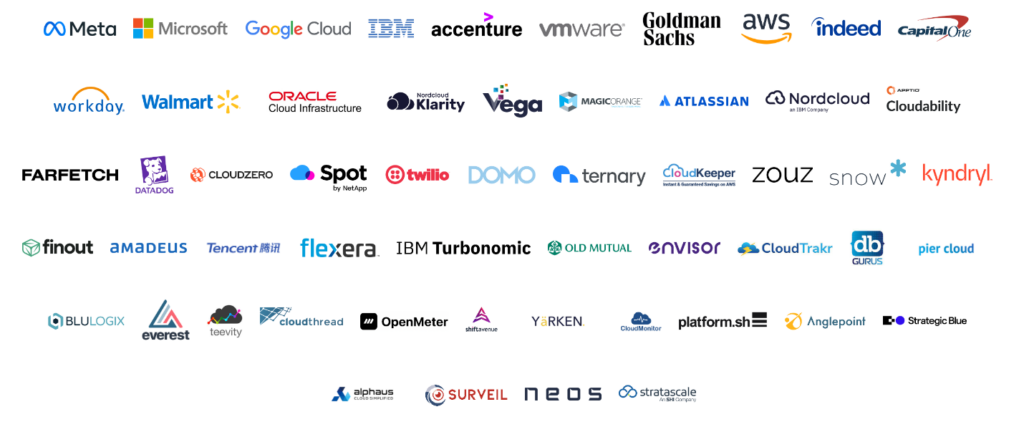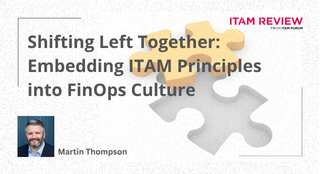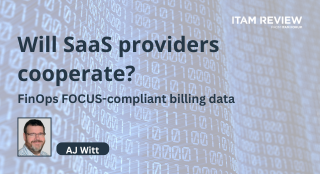An Introduction to FinOps FOCUS, a new toolkit from the FinOps Foundation
This article provides a brief introduction to FinOps FOCUS, a new toolkit from the FinOps Foundation and Linux Foundation.
Managing cloud costs in a modern organisation brings with it many challenges – one of which is complex data that is inconsistent across different cloud and service providers. These differences can make it difficult for customers to truly understand and reconcile their cloud spend and so hampering efforts to effectively manage cloud spend – particularly in a multi-cloud environment.
The FinOps Cost and Usage Specification (FOCUS™), is a new technical specification and toolkit sponsored by the FinOps Foundation. It aims to build and maintain an open standard for cloud cost, usage, and billing data across all major cloud service providers.
Although it is driven, and sponsored, by the FinOps Foundation, with many of the same contributors – FOCUS is a separate open source Project under the Linux Foundation.

To quote the FinOps FOCUS site:
“The FOCUS™ schema definition and FinOps-aligned terminology provide clear guidelines for producing FinOps-serviceable billing datasets. These datasets enable FinOps practitioners to perform FinOps capabilities using a generic set of instructions, regardless of the origin of the dataset.”
At the time of writing, there are over 50 contributors to the FOCUS program including:
- Microsoft
- Amazon
- Oracle
- IBM
- VMware
- Flexera
- Snow
- Anglepoint
- Walmart
And many more. The full list of contributors can be accessed here: https://focus.finops.org/contributors/

How does it help?
FinOps FOCUS consists of several components that define how cloud cost data should be structured and presented. These components include:
- Raw data: This component defines the basic attributes of each resource in the cloud, such as name, type, size, location, currency, etc.
- Services: This component defines the categories of resources in the cloud based on their function or purpose, such as compute, storage, network, etc.
- Regions: This component defines the geographical locations where resources are deployed in the cloud.
- Sub accounts: This component defines the logical units of billing within a service category or region.
- Resources: This component defines the individual units of consumption within a sub account or service category.
- Data quality: This component defines how to validate and cleanse the data before using it for analysis or reporting.
By using FOCUS as a common schema for cost and usage data across multiple cloud providers, companies can benefit from several advantages. Some of these advantages are:
- Simplification: Companies can simplify their multi-cloud billing data by using one consistent format instead of multiple formats from different vendors. This reduces complexity and overhead in processes such as allocation, chargeback, budgeting, forecasting, etc.
- Consistency: Companies can improve their reporting consistency between multiple vendors by using one standardized way to present their cost and usage data. This enhances transparency and accountability for both internal and external stakeholders.
- Comparison: Companies can compare their cost and usage data across different vendors by using one common metric instead of multiple metrics from different sources. This enables them to benchmark their performance against industry standards or best practices.
FOCUS is an innovative initiative that aims to provide a common language for cost and usage data across multiple cloud providers. It will enable companies can simplify, standardize, and compare their cloud spending and usage, and optimize it based on business value and performance. This is a key enabler for achieving FinOps maturity and excellence, and ultimately, for leveraging cloud as a strategic asset for business growth and innovation.
Conclusion
Any initiative that can reduce the complexity of cloud billing data is to be welcomed. Reducing the amount of work needed to understand a baseline of cloud spend will enable customers to refocus that energy on activities that are more strategic, focused and, ultimately, more worthwhile.
More on FinOps from the ITAM Review
- Are ITAM tools vendors focusing too much on the next big thing (e.g. FinOps) at the expense of core SAM functionality?
- Hybrid FinOps: Uniting ITAM and FinOps teams
- Discussing FinOps with Flexera’s Cloud Lead
- A FinOps conversation with Catherine Zhang
Can’t find what you’re looking for?
More from ITAM News & Analysis
-
Broadcom vs Siemens AG - A Brewing Storm
The ongoing legal battle between VMware (under Broadcom ownership) and Siemens is yet another example of why ITAM goes far beyond license compliance and SAM. What might, at first glance, appear to be a licensing dispute, ... -
Shifting Left Together: Embedding ITAM into FinOps Culture
During one of the keynotes at the FinOps X conference in San Diego, JR Storment, Executive Director of the FinOps Foundation, interviewed a senior executive from Salesforce. They discussed the idea of combining the roles of ... -
Addressing the SaaS Data Gap in FinOps FOCUS 2.1
I recently reported on the FinOps Foundation’s inclusion of SaaS and Datacenter in its expanded Cloud+ scope. At that time, I highlighted concerns about getting the myriad SaaS companies to supply FOCUS-compliant billing data. A couple ...
Podcast
ITAM training
Similar Posts
-
Broadcom vs Siemens AG - A Brewing Storm
The ongoing legal battle between VMware (under Broadcom ownership) and Siemens is yet another example of why ITAM goes far beyond license compliance and SAM. What might, at first glance, appear to be a licensing dispute, ... -
Shifting Left Together: Embedding ITAM into FinOps Culture
During one of the keynotes at the FinOps X conference in San Diego, JR Storment, Executive Director of the FinOps Foundation, interviewed a senior executive from Salesforce. They discussed the idea of combining the roles of ... -
Addressing the SaaS Data Gap in FinOps FOCUS 2.1
I recently reported on the FinOps Foundation’s inclusion of SaaS and Datacenter in its expanded Cloud+ scope. At that time, I highlighted concerns about getting the myriad SaaS companies to supply FOCUS-compliant billing data. A couple ... -
The Future of ITAM
As an ITAM Industry Analyst, I’m often asked what ITAM’s future looks like. This can be a tough question to answer because when it comes to the future, there are endless possibilities. Often, it seems, some ...




